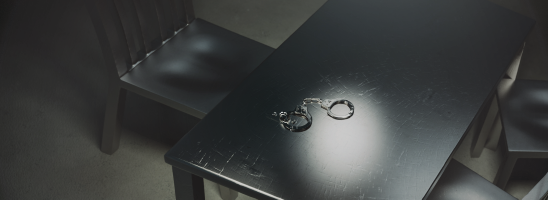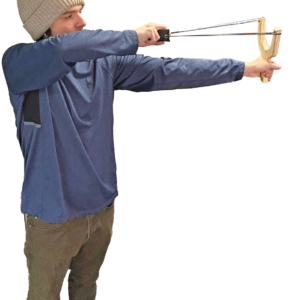
The Real Profilers
By Tim Dees
The criminal profilers of the Federal Bureau of Investigation have become famous largely because of their multiple portrayals in entertainment media. The Jack Crawford character, played by Scott Glenn in The Silence of the Lambs, was based on John Douglas, one of the FBI’s first profilers. A 1990 TV series, Profiler, ran for four seasons and was the role model for most of my female students when I was teaching criminal justice then. Most recently, the TV series Criminal Minds is presently in its 15th season, changing out major cast members every few years.
All of these productions share at least one common element: The characters have very little resemblance to the FBI’s real profilers.
The FBI does indeed have profilers. One of the first was the aforementioned John Douglas, who was an FBI special agent from 1970 to 1996. He was assigned to the FBI’s Behavioral Science Unit (BSU), headquartered at the FBI Academy in Quantico, Virginia, in the 1980s. At that time, the BSU focused mainly on how psychology could be used to investigate crimes and resolve hostage situations. Douglas theorized that the minutiae of a crime could be analyzed to get an idea of the characteristics of the criminal. This analysis could be useful in reducing the number of persons in the suspect pool and allowing investigators to focus on only the most likely perpetrators. He began his study interviewing serial killers who were either on death row or who were serving life sentences. His subjects included Ted Bundy, John Wayne Gacy, Sirhan Sirhan, David Berkowitz and Richard Speck, among others. Many of the interviews took place over several days or even weeks. The killers had nothing to lose, and many enjoyed the attention they got from Douglas.
Douglas tried to identify commonalities in the personalities of the interview suspects, and compared those characteristics to their individual crimes and the common factors between them. Eventually, he was able to come up with some hypotheses that if a crime included characteristic A, the perpetrator likely included trait B in his makeup.
One of Douglas’ first cases where he applied the profiling techniques he developed was a series of kidnap-murders in the Atlanta area. Most of the victims were Black children and adolescents. Some of the detectives assigned to the case believed the motive for the killings was racial, e.g. a White supremacist killing Blacks. Douglas offered that serial killers usually share the same ethnicity as their victims. His analysis caused the investigators to narrow their suspect pool to eliminate white suspects. They eventually arrested and convicted Wayne Williams of two of the adult murders, and believe he is responsible for at least 26 more. Williams is serving two consecutive life sentences in a Georgia prison. Most recently, Douglas’s early work has been protrayed in the Netflix drama Mindhunter.
The TV and movie dramas show the profilers traveling en masse to the crime scene, typically one where the local police are stumped and without investigative leads. They give a whiteboard talk to the local cops, providing their characterization of the “unsub” or unknown subject. Pivotal moments in the case occur after a quirky computer geek pops up for one or more video chats, having quickly accessed records that are often ancient and have never been digitized. Within a day or two, typically after a tense showdown scene, the killer is arrested or killed, and the FBI folks hop back onto their government jet to return to Quantico and await their next case. You can usually count on it occuring the following week, on about the same day and time.
In real life, the process looks something like this: a local law enforcement agency has a major case, often a kidnapping or a murder, or several such crimes with similar details. The local detectives work the case, but reach a point after weeks or months where they have exhausted every investigative lead and are not much closer to making an arrest than they were when they started. The agency’s chief or sheriff contacts the BSU at Quantico and makes a formal request for assistance.
The local detectives gather up the reports, photos and other paperwork related to the investigation, and send it to the FBI. This used to involve shipping a sizable, heavy carton of paper, but now the details can be sent electronically. The BSU agents go to work on the case, and within a few weeks, set a date for one or two of the detectives assigned to the case to travel to Quantico for a meeting with the profilers. The meeting might take place over a couple of days. At the end of the meeting, or possibly a short time afterward, the BSU will deliver the profile. It usually fits on one typewritten page with room to spare. The profile is seldom dead on. In most cases where the police have been able to make an arrest after receiving the profile, the information contained in it is 60%-80% accurate. The most difficult aspect can be in deciding which 60%-80% will serve as a guide.
In many cases, the profile doesn’t point to a single person as much as it allows the detectives to eliminate suspects from consideration when they are so unlike the profile that it would have to be dead wrong for them to be responsible. When you have no idea who your perpetrator might be, it helps to know who he or she isn’t.
With DNA analysis playing such a major role in many investigations of violent felonies, being able to eliminate people from the suspect pool is highly useful. It’s sometimes possible to test the DNA of everyone in a suspect pool, but it’s time consuming and very expensive. It might cost $500-$1000 for each DNA profile obtained from a mouth swab or a discarded cigarette. Narrowing the parameters of the suspect pool allows the investigators to make the best of their limited resources.
I have found exactly one dramatic portrayal of the criminal profiling process that is anywhere close to the real world. The Wire was a cable TV series that ran for five seasons, from 2002-2008. It studies the illegal drug trade in Baltimore, Maryland, from multiple perspectives: those of the police, the dealers, the users, the press, the schools, and the local political machine. It has been deservedly characterized as one of the finest productions ever to grace a TV set. Several streaming services offer it on demand, and it’s very much worth your time to watch it.
The protagonist of The Wire is Baltimore PD Detective Jimmy McNulty, played by Dominic West. He is very good at his job, but his bosses hate him for various reasons (the politics of the Baltimore PD are also representative of the inner workings of many U.S. law enforcement agencies). McNulty’s mission in life is to arrest and put away the incredibly violent and callous drug kingpin of Baltimore, a man named Marlo. For various reasons, McNulty is told to lay off Marlo and devote his talents elsewhere. Being just as determined as he is irreverent, he stages a series of murders of homeless people, using the bodies of men who died of overdoses or natural causes. He manages to get the local news media involved, and before long McNulty is given a blank check to pursue the nonexistent serial killer and bring him to justice. He goes through the motions to keep police management off his back, but he’s actually using the resources to keep after Marlo.
When he is ordered to get a criminal profile from the FBI, he sends the contrived case files, and eventually drives down to Quantico with his partner to get the BSU’s read on the case. The special agent assigned to the profile reads off a detailed description of the suspect, one that happens to be 100% dead on. Although no one in the room except McNulty realizes it, the profile describes McNulty perfectly. This scene is available on YouTube; enter “The Wire FBI profile” into the search bar.
So, the next time you see those FBI guys jump onto their bizjet to save the day in some hapless burg, remember that most of the field trips the real profilers get are to prisons, where they get chummy with someone who had a dozen corpses buried in his back yard.



